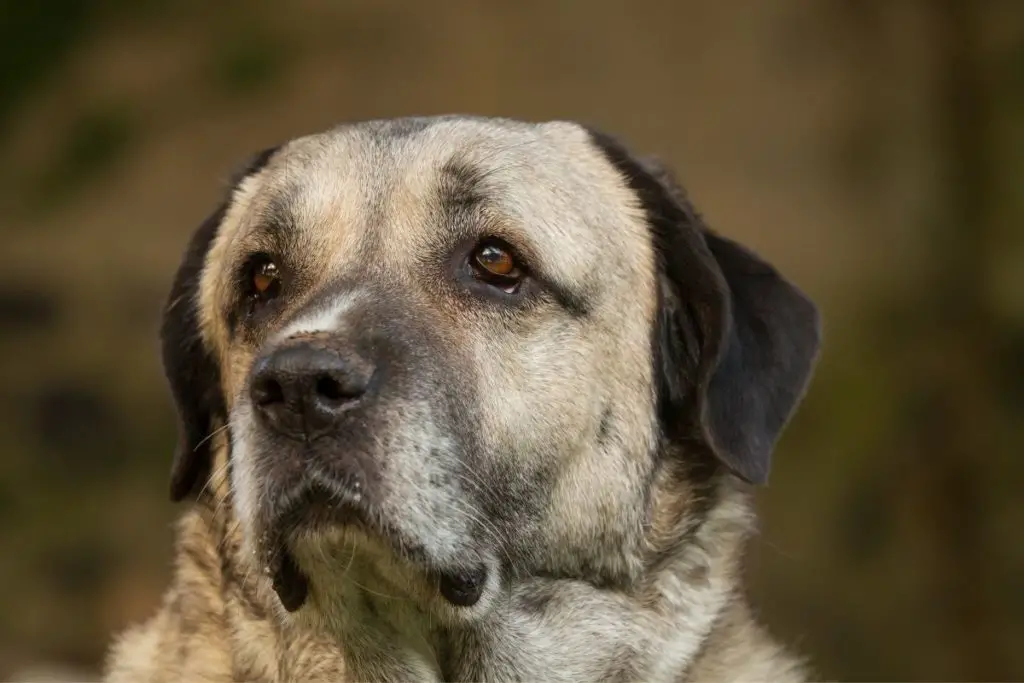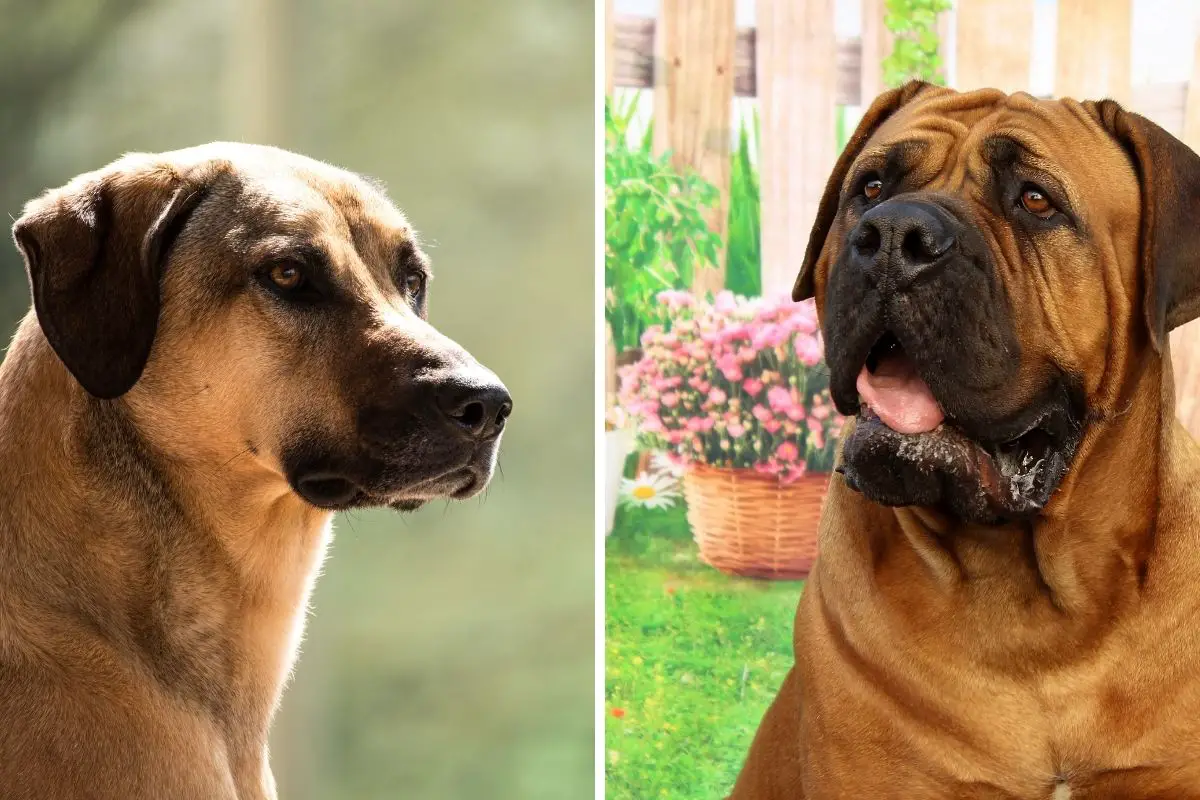The Kangal is a Turkish breed of dog that is often mistaken for the Mastiff. The two breeds, however, are not related.
Yet their similarities in size and temperament have led to some confusion about their origins. There is an ongoing debate among experts as to whether or not they share common ancestors.
So, is a Kangal a Mastiff? A Kangal is not a Mastiff, The Turkish Kangals and the Mastiffs are different dogs and from different origins, and most experts agree that Mastiffs and Kangals are not related but may share a common ancestry thousands of years ago, but they are different dogs today and are not related.
The history of both the Kangal and the mastiff dogs are very different dogs and quite fascinating in their own rights, so to understand your dog better, let’s take a look into the origin and history of both dogs.
Contents
The origins of the Turkish Kangal

The Kangals are the national dogs of Turkey, and researchers were able to found evidence of them living in Turkey for centuries. The name Kangal comes from the town of Kangal near Sivas city.
Kangals have been guarding sheep herds in the Sivas region for centuries. They are excellent watchers and fearless guard dogs, and they can protect farms and livestock against much larger predators, and they specialize in defending against wolves in particular, which has proven to be crucial for farmers in Turkey.
When their fame for being such good guard dogs exploded, everyone around the world wanted a Kangal, which meant a lot of these dogs started to be shipped out of Turkey. To stop the numbers of their national dog from dwindling in the country, and because they are actually important working dogs in Turkey, the government decided to ban the export of Kangal dogs.
Lately, however, the government of Turkey permitted the export of a limited number of Kangal dogs to farmers in places where predators are a serious problem, particularly in Africa and Australia, where the Kangals have again proven to be effective against vicious predators like wild dogs and cheetahs.
You can learn why Kangals are considered the strongest dogs in the world here.
The Origins of Mastiffs

Mastiffs are an ancient type of dogs that can be traced in history for thousands of years. The Ancient Egyptians, Chinese, Romans, and Greeks all had mastiff-type dogs that were used for different purposes.
In fact, we can trace the Tibetan Mastiff and Neapolitan Mastiff to thousands of years ago and can find that these breeds actually changed very little throughout history.
The Romans brought these dogs back from England after they were impressed by them when the English used them to fight against the Romans. However, the modern Mastiffs we know and love today can be traced only to medieval England and they were used as guards and large-game hunting dogs.
The English also used them for certain fights, for example, there are mentions of them being used to fight alongside the British in the Agincourt Battle.
However, after the second world war, the Mastiffs were almost extinct, and about 14 mastiffs – or so the legend goes – were left in Britain. Thanks to enthusiasts and breeders, the Mastiffs quickly made a comeback and were then exported all around the world.
Are Kangals and Mastiffs Related?

While the Kangal is not a Mastiff, the two breeds share some common ancestry. The Mastiff is an old English breed that is thought to have originated in Asia with Turkic tribes. The Kangal Shepherd Dog is a Turkish breed that is thought to share some of its DNA with the Mastiff. Both breeds are known for their strength and courage.
What breeds make the Kangal?
The Kangal is its own breed, and they are one of the oldest breeds of dogs that have not had humans tempering with the breed as much as they have done with other breeds.
The Kangals are also one of the purest dog lines today thanks to the isolated nature of where they were developed in Turkey.
Is a Kangal the largest dog?
The Kangal is not the largest dog breed, the largest dog in the world is the English Mastiff, but the Kangal is the strongest dog in the world and the Kangal is so strong that it’s even stronger than dogs like the Tibetan Mastiff and the Cane Corso.
What dog is bigger than a Mastiff?
The Irish Wolfhound, Great Dane, and Scottish Deerhound are all bigger than the biggest Mastiff breed which is the Old English Mastiff.
How big do Kangals get?
Male adult Kangals can weigh up to 145 pounds. They may grow as tall as 32 inches at the withers. Female kangals are a bit smaller, but they are still enormous.
How was the Kangal made?
According to the Turkish Kangal Dog Breeder’s Club, there is a lot of speculation on how and when this breed was developed.
While it is said that they can be traced back about 400 years ago with some evidence existing as far back as 700 BC, many people say that these dogs were originally bred by shepherds in central Turkey.
In fact, some say that is it is possible they are a mix between the Caucasian shepherd dog and Anatolian Mastiff breeds with some evidence supporting this theory as well.
However, there is no real way to tell for sure how these dogs were developed or who created them that we know of now.
What is known is that the Kangal is a herding dog and was used to protect livestock from predators like wolves, jackals, bears, and even leopards.
They have also been used as guard dogs in Turkey for many years.
What is the difference between a Mastiff and Kangal?
There are a few key differences between the Mastiff and Kangal breeds that can be easily spotted.
Mastiffs are typically much larger in size, with males averaging around 200 pounds and females averaging around 150 pounds.
Kangals, on the other hand, typically weigh in at around 110-140 pounds for males and 80-100 pounds for females.
Mastiffs can be any color, including brindle and fawn colors as well as the more common black or tan coats that is seen in many dogs; Kangals are typically only brown.
Helpful Resources
If you like this article, please share it!

